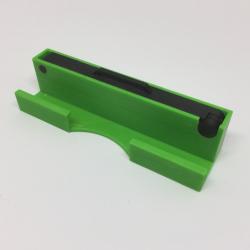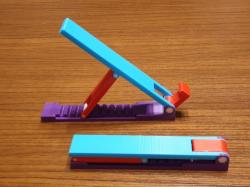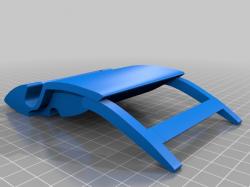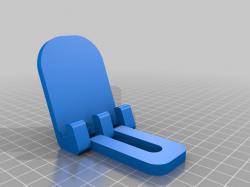 Folding Pocket Tablet Stand 3D print model
Folding Pocket Tablet Stand 3D print model Folding tablet stand
Folding tablet stand Tablet stand (folding)
Tablet stand (folding) Folding tablet stand
Folding tablet stand Tablet Stand (Folding)
Tablet Stand (Folding) Folding Tablet Holder
Folding Tablet HolderExploring Folding Tablet 3D Models
Folding tablet stands are particularly popular due to their convenience and portability. Designs vary from simple, minimalist stands that are easy to print and assemble, to more complex, adjustable models that can be tailored to different viewing angles and usage scenarios. Websites like Thingiverse offer a range of these designs, such as the “Phone/Tablet Stand – Flat fold – Print in place!” by jonnig, which is designed for universal compatibility and can fold flat, making it highly portable and convenient for users on the go.
3D Printing Your Folding Tablet Stand
When it comes to 3D printing a folding tablet stand, there are a few tips and considerations to keep in mind:
- Material Choice: Depending on the design, materials like PLA or ABS can be used. PLA is great for rigid, strong stands, while ABS can offer more flexibility if the stand has moving parts.
- Print Settings: Higher infill settings can provide more strength, but also use more material and increase print time. For stands, a 20-40% infill is often sufficient.
- Layer Height: A smaller layer height can give smoother finishes but will increase the print time. A 0.2mm layer height is a good balance between quality and print duration.
- Supports: Check if the model requires supports, especially for overhangs or complex folding mechanisms. Many folding stand designs are optimized to print without supports to simplify post-processing.
Q&A: Common Questions About 3D Printing Folding Tablet Stands
- Q: Can I adjust the size of the 3D model to fit my tablet?
- A: Yes, most 3D modeling software allows you to scale models. However, be mindful of how scaling might affect the functionality and structural integrity.
- Q: What should I do if the parts don’t fit together well after printing?
- A: Slight sanding or trimming with a hobby knife can help. Ensure your printer is well-calibrated for accurate dimensions.
- Q: How long does it take to print a folding tablet stand?
- A: Print times can vary widely based on the model complexity, print settings, and printer speed. Simple designs might take a few hours, while more intricate ones could take over a day.
- Q: Can I print a folding stand in one piece, or will it need assembly?
- A: Many designs are optimized for print-in-place, requiring no assembly. However, larger or more complex stands might come in parts that need to be assembled post-printing.
The versatility of 3D printing allows for a high degree of customization, enabling users to tailor their folding tablet stands to their specific needs, whether it’s for home use, travel, or office settings. With the right design and print settings, anyone can create a functional, stylish, and durable stand that enhances their tablet experience. For a wide variety of designs, STLFinder is a good resource to explore different 3D models suitable for your project.
